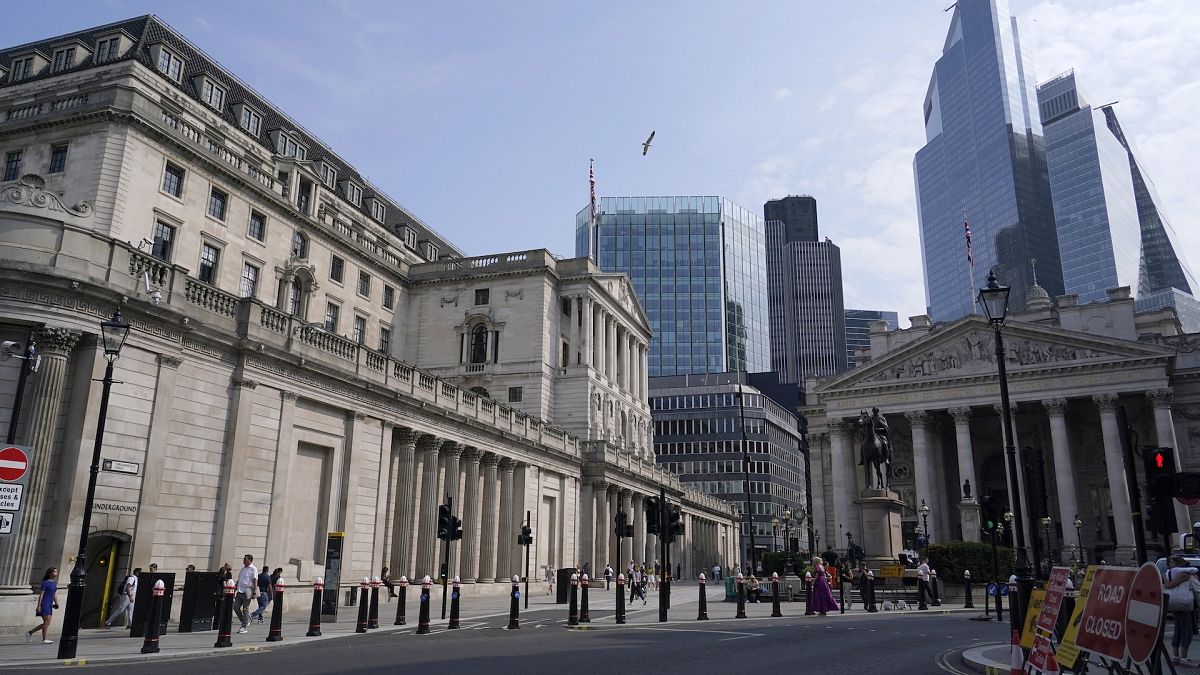Sterling soared to its highest level in two and a half years against the US dollar after the Bank of England held its interest rate steady, diverging from the Federal Reserve’s substantial rate cut.
The pound surged following the Bank of England’s decision to maintain the interest rate at 5%, in contrast to the Federal Reserve’s outsized 0.5% rate cut to a range of 4.75%–5%.
Sterling climbed above 1.33 against the US dollar, marking its highest level since March 2022, before a slight pullback. Meanwhile, GBP/EUR strengthened for the second consecutive day, reaching a two-month high of 1.1922.
The BoE reaffirms its hawkish stance
The Bank of England’s Monetary Policy Committee voted 8 to 1 to keep the interest rate unchanged, as widely anticipated. In August, the bank made its first 0.25% rate cut since 2020, signalling a cautious approach to further easing.
The central bank highlighted the importance of a gradual approach to monetary easing due to persistent inflationary pressures.
Governor Andrew Bailey stated: “It’s vital that inflation stays low, so we need to be careful not to cut too fast or by too much.”
This hawkish stance contrasted sharply with the dovish Federal Reserve, propelling the pound higher against most G-10 currencies.
The committee also maintained the pace of £100bn (€119bn) per year in balance sheet reduction.
The yield on the UK’s 10-year government bonds rose 5 basis points to 3.89%, outpacing its European peers, while the US 10-year bond yield remained flat at 3.71%.
The wider bond yield spreads increased the appeal of the British pound, offering better returns for bondholders.
Pound’s trends against other peers may vary
The Bank of England’s hesitancy to implement further rate cuts is likely to continue fuelling the pound’s rally against most other currencies.
Central banks such as the Federal Reserve, European Central Bank, Reserve Bank of New Zealand, and Swiss National Bank have all shifted towards more dovish policies.
Anticipation of consistent rate cuts by these institutions is a key factor in weakening their respective currencies against sterling. As a result, the pound may maintain its upward momentum against the US dollar, euro, New Zealand dollar, and Swiss franc.
However, central banks with a relatively hawkish stance, like the Reserve Bank of Australia and the Bank of Japan, could strengthen their respective currencies, potentially exerting downward pressure on GBP/AUD and GBP/JPY.
With economic growth slowing and inflation continuing to cool, the BoE may find it difficult to avoid further rate cuts. The speed and scale of future easing will play a critical role in shaping the pound’s trajectory.
Currently, markets anticipate two more rate cuts of 0.25% in November and December. A more aggressive reduction could trigger a reversal in the pound’s upward trend. That said, any change in the Bank of England’s stance could alter this outlook.
Pound weakens against the Japanese Yen
The pound has experienced a sharp decline against the Japanese yen since July, when the Bank of Japan (BoJ) raised its interest rate for the second time this year.
While most major central banks have entered an easing cycle, the BoJ remains on a tightening trajectory to bolster the yen’s value.
This policy divergence may drive a long-term appreciation of the yen against other currencies, including sterling.
However, the short-term outlook for GBP/JPY suggests a potential reversal.
In today’s policy meeting, the BoJ kept its interest rate unchanged at 0.25% and signalled no rush to raise rates further as it assesses the exchange rate and the policy’s economic impact.
This dovish stance could provide support for a near-term rally of the pound against the yen.

